Utility Patents are the most common form of patents in the US. Judging from the trends of the last 5 years, the USPTO grants nearly 300,000 utility patents in a year.
A huge part of these utility patents is the patent illustrations. Patent illustrations are drawings that provide a visual description of your invention. They aid your claims and descriptions by elucidating them in a manner that no amount of words can. However, you must ensure that they follow the strict set of guidelines set by USPTO for patent drawings.
So, how can you ensure that you make the best illustrations? Let’s find out.
Why do you need patent illustrations in Utility Patents?
According to the guide from USPTO for utility patents, you MUST include patent illustrations in your application. This is because illustrations are necessary to understand the subject matter for which you seek the patent.
The illustrators must show every feature of the invention which exist in the claims section. You must also note that you cannot introduce an illustration into your application after filing the patent application. The reason is that there is a prohibition against introducing new matter in an application.
How to make good illustrations for Utility Patents?
The guidelines and requirements are based on 37 CFR § 1.84. All applicants of utility patents must ensure that their illustrations fall in line with these rules and guidelines. This will ensure maximum chances for you to get the utility patent grant.
Understanding the Guidelines
First, let’s understand what exactly does USPTO wants when you write a patent. The Manual of Patent Examining Procedures (MPEP) lists out instructions that you must follow:
- You must create all the illustrations on white A4 matte paper and it needs to be flexible and strong.
- The dimensions of the paper should be 21cm x 29.7cm or 21.6cm x 27.9 cm.
- Only use India ink on all drawings.
- All illustrations must be in black and white unless a part of the invention needs color to explain it.
- Ensure that every drawing clearly mentions the invention name, name of the inventor, and application number.
- Margins should be as follows:
- 2.5 cm on the top
- 1.0 cm on the bottom
- 1.5 cm on the right side
- 2.5 cm on the left side
- Ensure that the drawing is to scale when the illustration is reduced to two-thirds the size.
- Superimposition of drawings should not happen.
- Avoid solid black shading except on bar graphs or to represent color.
- You may use symbols and legends if necessary to describe the invention.
- Use lead lines to redirect the reader from the drawing to the associated symbol in the description.
Charts and Diagrams
Drawings aren’t restricted to illustrations and can also include charts and diagrams. In fact, if you wish to get a process patent, you MUST include flowcharts to explain the entire process. You may also need to include tables, formulas, and waveforms while describing your invention. In order to represent this data, you must the same rules as any other type of drawing.
Photos
The USPTO allows you to add photos for utility patents. The photographs need to be in high definition to depict intricate details of the invention. They must follow the same rules in terms of the type, size, and margins of the illustration.
Color Drawings
Color drawings are extremely rare to find in utility patents. The first step is to file a petition under Title 37 (CFR) 1.17(h). You must also pay the specified fee for permission to include and use color drawings. The quality of the drawing should be high enough. This is to ensure that one can reproduce them in black and white on the printed patent without losing any details.
Using Views Optimally
You need to include several viewpoints in your drawings to depict the looks and functioning of your product. Wherever applicable, you should include the following views of your invention:
- Standard six views (front, back, right, left, top, and bottom) for 3D objects.
- Two views (front and back) for 2D objects
- Three-dimensional perspective views
- Exploded views to represent how each part works during the operation of the invention
- Sectional views to depict the functionality
You need not include unornamented surfaces. Shading is another essential component of patent drawings. It depicts depth, contour, and texture. You should use dots, lines, and distinctive patterns for this.
Arrows and lead lines also play a key role in the drawings. Here are the places where you use arrows:
- To signify movement direction.
- An arrow on a lead line signifies the entire section to which it points to.
- When an arrow is touching a lead line, it shows the surface indicated by the line.
Other Tips to Focus On
Despite all these rules, there are other considerations you should be aware of while creating drawings for utility patents. Keeping these in mind will boost the overall presentation of your drawings. Some of these include:
- Holes: Ensure that you don’t make any holes anywhere in your drawings.
- Copyright/Mask Work Notices: You can add these in the drawing directly below the portion they pertain to. You must ensure they have a dimension of 1/8 inch x 1/4 inch.
- Numbering of Sheets: You must number the drawings in Arabic numerals, and write it on the top of the sheet. This can be either in the middle or on the right, but not in the margin. Numbering must also include two numerals separated by a line to show the page out of the total number of pages. Ensure that the numbers that you use to identify portions of the drawing are not larger than the numerals.
- Numbering of Views: You must number the views with consecutive Arabic numerals, and they must be independent of sheet numbering. Another key point is to use the same Arabic numerals for partial followed by a capital letter. You must not use brackets, circles, or inverted commas while writing the numbers and letters. These numbers must also be preceded by “FIG.” But this isn’t necessary if there is only 1 view.
- Security Markings: You may use them, but they must be in the center of the top margin.
- Corrections: You must ensure that the corrections you submit with the patent drawing must be permanent and durable.
Conclusion
The USPTO demands you to follow a lot of rules for drawings in utility patents. However, if you ensure that everything is in order, then the USPTO will not object to the illustrations in your application. Rather, illustrations will not only help you in securing the patent grant but also protect the patent from infringements. A good set of illustrations will make any potential infringers think twice.
Need an Illustrator’s assistance? – Professional Patent Illustrators
You may have a brilliant invention, deserving of a patent. Naturally, you will need to ensure that your illustrations are spot on. But, by now you already know how tedious the entire process of creating a drawing is.
Hence, it is important it is to hire the right professional. Professional Patent Illustrators boast 10+ years of experience in delivering top quality patent illustrations. We specialize in Utility patents and design patents, with thorough knowledge of the latest guidelines and norms. Our turnaround time is incredibly fast and we guarantee any number of iterations until we satisfy your needs.
You can avail our Professional Patent Illustration services here.
Other Related Articles:
All you must know on Antecedent Basis
Intellectual Property (IP) Paralegals Facts

Click Here to Get Download Access (Free Sample Illustrations)



